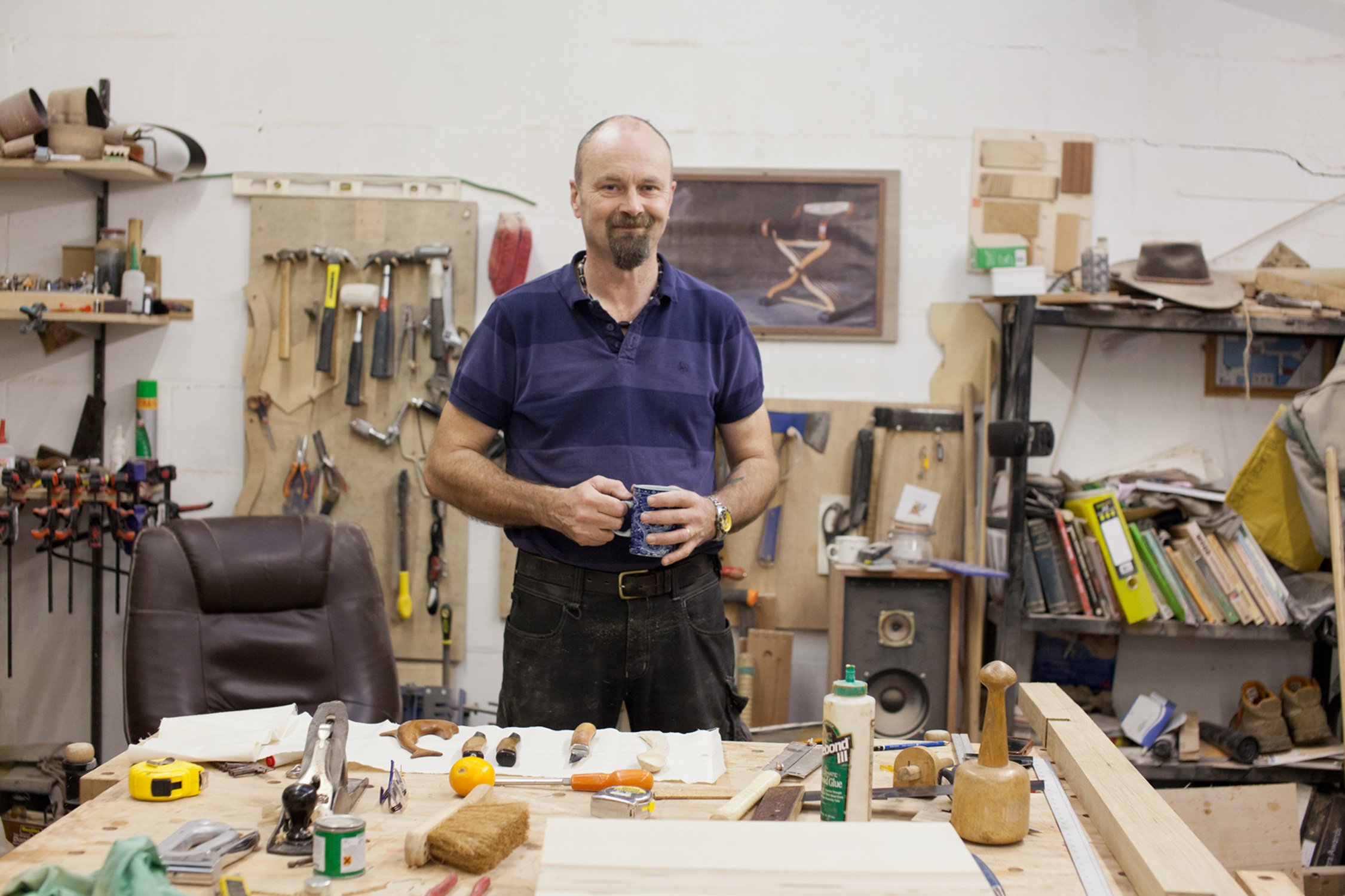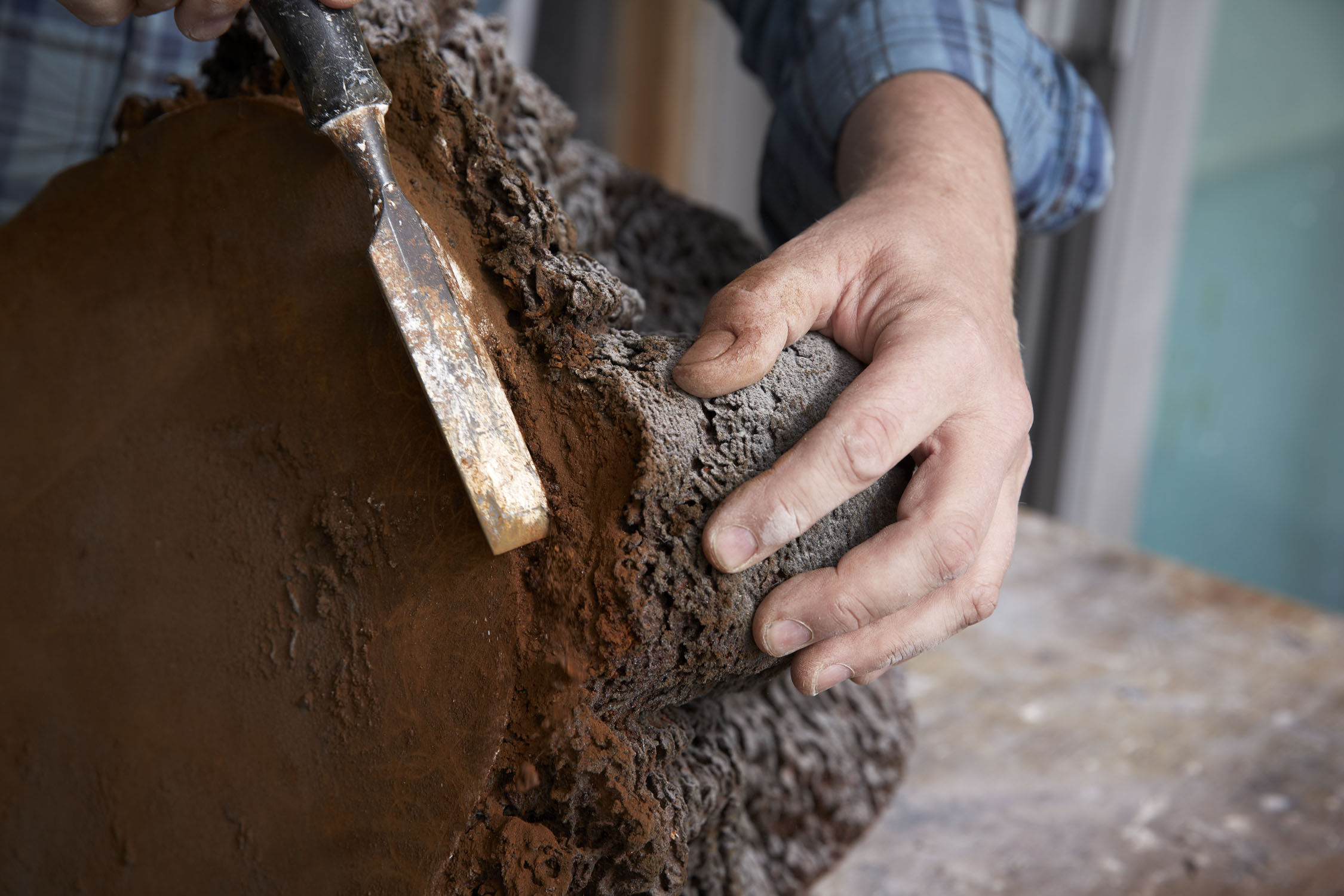At the age of around four, Finbarr Lucas tottered off to his dad’s workshop and put together his first piece of furniture, emerging within a few hours with a small armchair. Some years later, as an adult, Finbarr was compelled to set up his design and manufacturing company in 2000, when he was kept awake at night by involuntarily designing furniture in his head.
Stories like these imply an innate knack for furniture design and manufacture on the part of Finbarr that seems evident in the work he and his co-worker Hazel Drummond produce today.
Their functional sculptures – curved desks, snaking shelving units, and kitchens made of old joists – tell of a instinctive understanding of the nature of the materials that Fink works with, as well as a good eye for how best to turn those materials into simple yet striking designs. At the same time, Finbarr and Hazel’s ethical convictions mean they source timber locally, use reclaimed wood, and even find a use for their wood shavings: as bedding for local chickens.
Pay a visit to Finbarr's studio at the next Yorkshire Artspace Open Studios weekend.
How would you describe your work?
I make wooden furniture. I use native and locally-sourced hardwoods such as ash, oak, beech and sycamore whenever possible to make freestanding cabinets, tables and chairs, cupboards, wardrobes and kitchens. I also make more sculpturally-influenced pieces, often using laminated birch plywood. These take the form of shelves, coffee tables and cabinets.
What inspires you?
All sorts of things inspire me. In design, interactions and interrelationships in particular: buildings and their interactions with their environment, the relationship between 3D forms in a space such as a room – furniture, sculpture or even the design of the room itself – and how it creates and plays with space. And, for some reason, the rear lights on vehicles. I’m quite taken with the countless ways modern designers can mess around with the same basic element of a couple of red lights. More widely, creative people who have forged their own position in the world are a constant source of interest and fascination.
What’s your workspace like?
I love it. It’s part of a small complex of studios. It’s in a new building, in the shape of about a third of a circle, with a green roof and underfloor heating. And it’s ordered, most of the time. Aside from the wood itself, there are so many different materials needed to make furniture – the fixings, ironmongery and finishes, as well as handtools, power tools and machinery, that the workshop needs to be as organised as possible or the time taken to make work increases dramatically and it becomes very hard to think.
What do you love about Sheffield?
The hills, and the people. I love its 3D-ness, and the obscure cut-throughs and little disordered sections of overgrown land. Buddleia in stone walls on the side of the railway tracks. And I love the warmth and the pride of everyone in the city. The sense we all have of its destiny.
What would you do to improve the city?
Cycle paths everywhere. Dedicated separate cycle lanes, priority at all junctions. More buses, rickshaws in the city centre. More trees, more green spaces. Solar power everywhere. It’s all achievable: I was in Munich this summer and it was a total revelation. It would all be possible here, too.
- Words by
- Kathryn Hall
- Images by
- Nigel Barker










